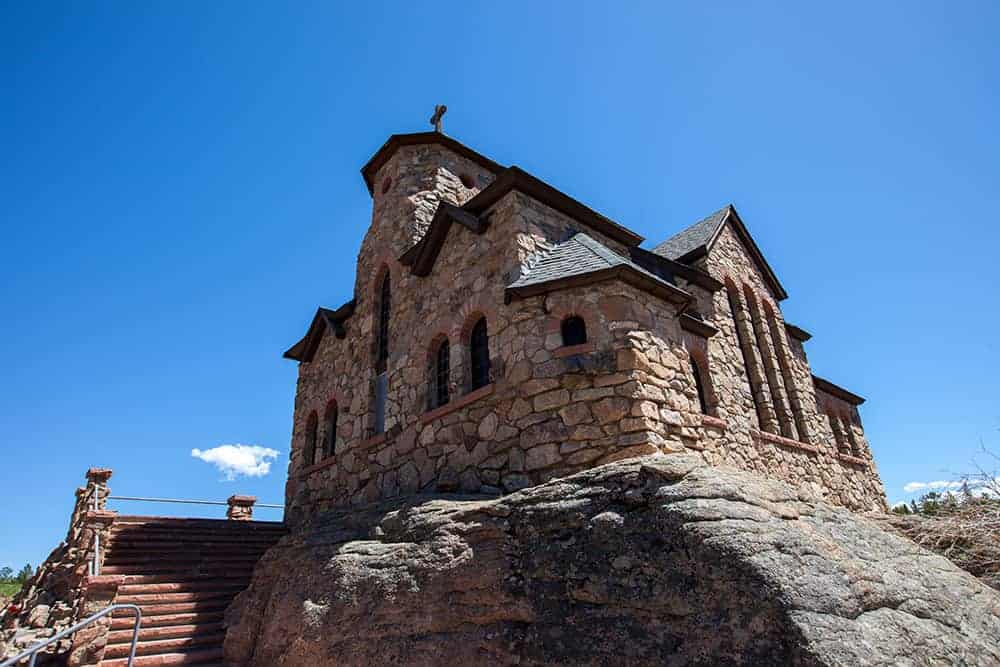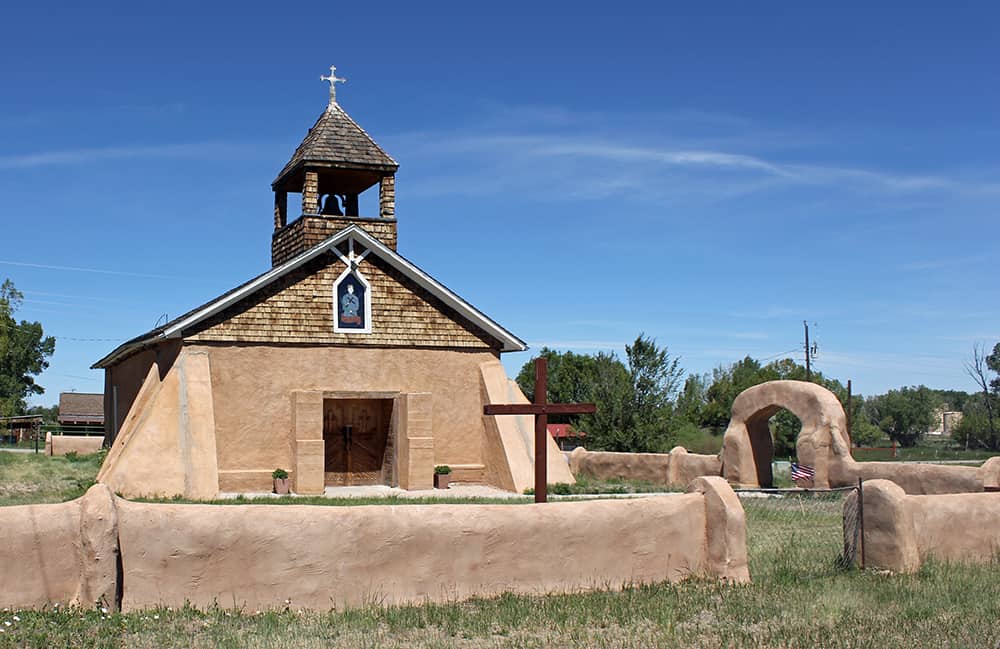On Aug. 1, Colorado will have made it way over the hill at a ripe 147 years old. Better known as Colorado Day, the day commemorates the founding of our great Centennial State in 1876.
The Catholic Church has a rich history in Colorado, and believe it or not, various regions, geographic landmarks and places in the state are named after Catholic saints. The San Juan Mountain Range, the San Miguel River and the San Luis Valley are but a few examples.
In honor of Colorado Day, here are five places within “Colorful Colorado” that take their namesake from a Catholic saint. You probably already know a couple of them, but the other three are real “diamonds in the rough” that are worth making the trek; in fact, two of them were built and founded before Colorado was even Colorado.
Mother Cabrini Shrine, Golden, CO

One of Colorado’s most popular pilgrimage sites, it’s hard not to be enamored by Mother Cabrini Shrine. Originally founded as a girls’ summer camp by St. Frances Cabrini in 1910, the shrine overlooks the I-70 corridor heading into the mountains and is as charming as it is relaxing. In addition to the praying in the chapel, visitors can stay in the old Stone House that was built in 1914 or one of the various retreat houses that have been added over the years. Aside from being a wonderful space to pray, Mother Cabrini Shrine doubles as a sort of natural Stairmaster to get those steps in with the 373-step staircase leading up to the shrine, affectionately known as the Stairway of Prayer.
St. Catherine of Siena Chapel, Allenspark, CO

Better known as the Chapel on the Rock, this functioning Catholic chapel is perhaps one of Colorado’s most iconic landmarks. As the story goes, in the early 20th century, a man by the name of William McPhee owned the land where the chapel stands, known as Camp St. Malo. McPhee was a parishioner of the Cathedral in Denver, and he often allowed the parish to take kids hiking and camping on his property. During one of those trips, several campers saw a meteorite or shooting star that had appeared to hit the earth. They went looking for it and came upon the Rock that now stands as the foundation of St. Catherine of Siena Chapel. Completed in 1936, the chapel’s official namesake is fitting, as both it and St. Catherine of Siena share a common thread of mystical experiences facilitated by the Lord. It has had many visitors over the years, but perhaps none so famous as St. John Paul II who, ever the outdoorsman, just had to make a stop while in Denver for World Youth Day in 1993.
Abbey of St. Walburga, Virginia Dale, CO

Located in the picturesque Virginia Dale, a small community just south of the Wyoming border, the Abbey of St. Walburga is a place where the voice of the Lord lives in the mountains, plains and rivers surrounding it. Named for the patroness of the Benedictine nuns, the abbey was founded in 1935 when three sisters from the Abbey of St. Walburg in Eichstätt, Bavaria were sent to a remote farm in what was Boulder. There, they built a strong foundation for the future of the abbey through hard work, poverty and an immovable trust in God’s providence. Today, the Benedictine nuns of Walburga humbly carry out the good works of the Benedictine order and carry on the legacy started nearly a millennium ago in 1035, when the original Walburg abbey in Eichstätt was founded.
San Luis, CO

Moving into the southern most regions of the State of Colorado, the Catholic roots of the region become much more evident. The oldest town in Colorado, San Luis, was founded in 1851 on the Feast of St. Louis, and predates the official founding of Colorado as a state by 25 years. The town is located along the Sangre de Cristo mountain range, which translates to “Blood of Christ.” One of the main attractions of the small town of just over 600 is a shrine at the town’s local Catholic parish. The Shrine of the Stations of the Cross was built by the parishioners of Sangre de Cristo Parish and the beautiful stations were designed and sculpted by native San Luis sculptor Huberto Maesta.
Capilla de Viejo San Acacio, Costilla County, CO

Just to the west of the town of San Luis lies one of Colorado’s oldest gems. The Chapel of Old St. Acacius, or Capilla de Viejo San Acacio as it’s known to the locals, is the oldest non-Native American religious site in Colorado that’s still active today. While the building of the church cannot be dated precisely, it was likely completed sometime in the 1860s. The namesake of the church comes from St. Acacius of Byzantium, a third century martyr. Near the church is the small village of San Acacio, which a local tradition holds got its name after one of the earliest San Luis Valley settlements, originally called Culebra Abajo, was attacked by a band of Ute in 1853. As the Ute attackers approached, the villagers asked for the intercession of St Acacius, a popular saint among their people. The Ute suddenly halted and fled before they reached the town, scared off by a vision of well-armed warriors defending it. In gratitude for this salvation, the village was renamed San Acacio, and the villagers built a mission church in honor of the saint.




